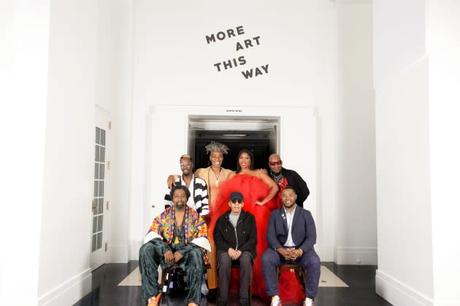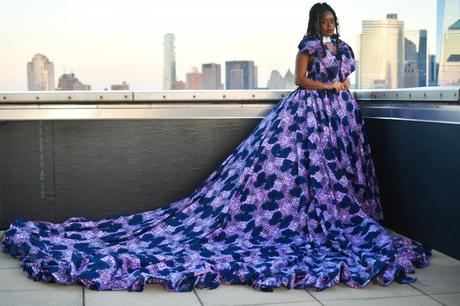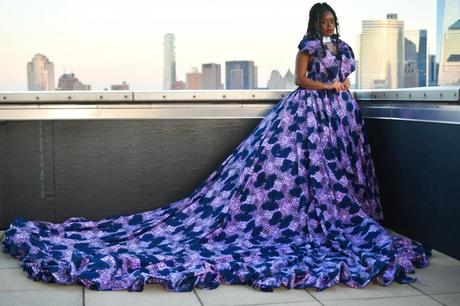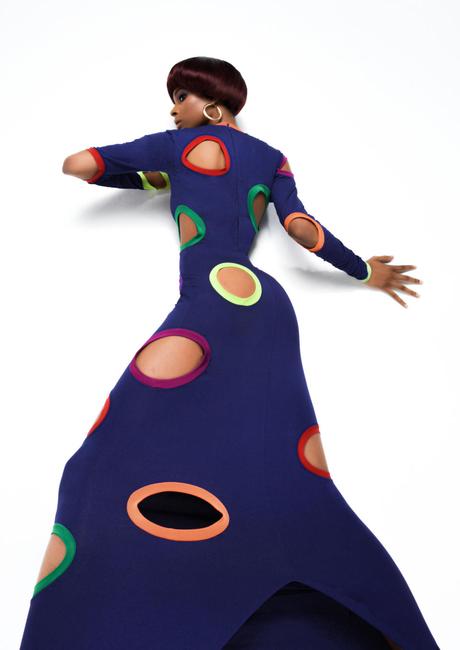
Newark, NJ, may not be synonymous with fashion, but a new exhibit aims to change that.
The Newark Museum of Art will unveil "The Story of Newark Fashion: Atelier to Runway" on Wednesday to spotlight 11 fashion designers with Newark connections. The exhibition, on view through June 2, is the museum's first exhibition to focus on contemporary fashion, a topic of increasing interest among museums and auction houses looking to attract a younger and more diverse audience.
More from WWDThe New Jersey city was once a manufacturing center for jewelry and accessories in the 19th and early 20th centuries. The new show highlights the efforts and global reach of creatives like Newark native Stephen Burrows. Newark's fashion influence gained traction in the 1950s and 1960s thanks to groundbreaking black designers Wesley Tann and Emily Miles. A longtime local resident, Tann first became a design assistant in 1950 and opened his own Seventh Avenue firm in 1961 - a first for a black designer. Another local resident, Miles, a milliner, later opened the Belle Meade School of Charm and Modeling in Newark and trained more than 1,000 women and girls, including Newark native Whitney Houston.
The work of Newark-raised Narciso Rodriguez, designer-stylist-makeup artist Douglas Says, the late designer Jerry Gant, Melody Asherman and Justis Pitt-Goodson of BrownMill Atelier are also featured. The show is curated by Kristen Owens, a historian of black fashion, and Tracey "Africa" Norman serves as curatorial consultant. During a joint interview, the duo discussed the significance of the new exhibition. With approximately 307,000 residents and multiple transportation options to and from New York City and beyond, Newark is known by many as "the Gateway City."
The story continues
Like Norman, Owens grew up in and around Newark and knew some designers. Visitors can see the collaborative nature in which the designers worked, including mentoring each other, such as Miles, who advised Tyrone Chablis. Chablis and Marco Hall, in turn, were mentors to Shavi Lewis. Several designers, including Chablis, Hall and Lewis, have used Norman as a muse. According to Owens, this fits in with Newark's somewhat underground family fashion scene.
NMOA President and CEO Linda C. Harrison said in a statement that the exhibit "demonstrates the Black and brown fashion community's proximity to household names and global brands."


The new exhibition also honors Burrows' contribution to the global fashion scene, following last year's 50. e anniversary of 'the Battle of Versailles', the historic fashion show in which a handful of American designers overshadowed their European counterparts in 1973. In addition to celebrating his work, Owens said the fact that there were twelve black models in that show was a great platform. , not only for him as a designer, but also for black fashion models.
An anchor attraction in the exhibition is a simulated catwalk featuring nine of Burrows' looks that helped define the disco era. Visitors can also catch a glimpse of model Pat Cleveland during the epic 1973 fashion show in a clip from the documentary "Versailles '73."
In addition to the historical and contemporary significance of the designers featured in the exhibition, there is also a powerful message of possibility for future generations. That could have significant reach, since there is the Newark School of Fashion & Design for high school students. After following fashion as a student "without being fully aware of the contributions of Black people and people of color to the industry," Owens said, "I'm ecstatic about the ways young people can come into the show to learn the possibilities, even when it comes to becoming a fashion curator. I didn't even know you could be that until I went to graduate school.
Educational outreach is another priority for Owens, who hopes to welcome students from local schools to learn about the different ways to work in fashion. As a fellow Newark resident, Norman is excited to see how younger museum visitors, who may not be familiar with the names of the featured designers, respond. "We all started at a young age. Everyone was just talented and doing their own thing," she said, adding that she started modeling at the suggestion of others. "That's how I met the [fashion] people from Newark. I also didn't know how many designers were available here. Newark was my training ground for learning to walk and perform in front of a camera before becoming an international professional model.
Norman said she took up modeling after her transition at the suggestion of a friend, but her career "skyrocketed" after Irving Penn discovered her. Meeting Penn was purely coincidental - a matter of "being in the right place at the wrong time," Norman said. While working as a muse for makeup artist Al Grundy and his fashion designer brother Daryl, Norman attended New York Fashion Week shows more as a spectator with a portfolio and FIT credentials for participation. After watching models walk up close in those tight spaces, she went home and practiced in a hallway with a mirror.
However, she faced some resistance in Newark at the time, due to the lack of understanding of who she was. "I could pass as a woman. So when people are physically attracted to you and you are not who they think you are, then negativity comes your way and people disrespect you and call you names," the model said.


Once Norman started modeling professionally, she left the Newark scene and joined the Zoli modeling agency thanks to Penn. At the end of a two-day shoot for Italian Vogue, an esteemed photographer called Zoli Management compared her to pioneering black model Beverly Johnson and encouraged the modeling agency to hire Norman, she said. With that recommendation, Norman went on to land jobs at major magazines and leading brands such as Clairol, where her photo was featured on the 'Nice'n Easy' hair color boxes in the mid to late 70's.
As for valuing the fashion industry today in relation to diversity, Norman said she "loves it," recalling the period in the '70s, especially in Europe, when black models took the stage dominated. "However, I quickly learned that everything has a season. Before there were the black models, there were the redheads and before that the Japanese models. Then there were the blondes and the black girls. After a while they didn't become black girls." Norman credits Bethann Hardison as the catalyst for "putting black girls back on the map."
While companies' commitment to diversity may have become more publicly undermined in recent years since the 2020 police killing of George Floyd in Minneapolis, Owens said, "There has been an amazing change where museums and galleries have taken on a more community-oriented focus. The Newark Museum of Art has someone in community engagement who is very focused on getting artists, designers and creatives of all kinds from the city and working with them for public programs, social media campaigns and other types of things .'
Through her work in academia, Owens has praised black fashion scholars such as Kim Jenkins, Jonathan Michael Square, Rikki Byrd, Tanisha Ford and Elizabeth Way. "They all work between museum spaces and higher education. They really encourage more diverse conversations within and around academia when it comes to fashion," she said.
The best of WWD